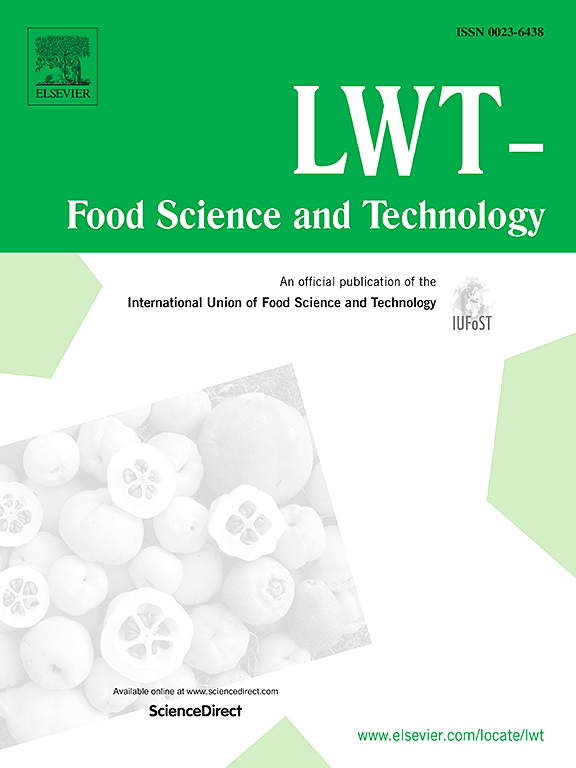叶黄素酯胶胶体结构对体外消化性能和肠道菌群的影响
IF 6.6
1区 农林科学
Q1 FOOD SCIENCE & TECHNOLOGY
引用次数: 0
摘要
目前对叶黄素酯胶的研究主要集中在配方开发上,对胶体结构如何影响消化和肠道微生物群的研究有限。本研究采用体外消化和结肠发酵的方法研究了果胶、明胶、结冷胶和卡拉胶基胶的影响。结果表明:胶体组成显著影响胃内颗粒尺寸(234 ~ 730 μm);胃弥散系数为0.14 ~ 0.73;0.12-0.71),果胶升高,明胶降低。颗粒大小和分散度与叶黄素酯释放量呈负相关。在胃消化过程中,这些参数与胃下质负相关,而黏度与双歧杆菌正相关。在小肠中,颗粒大小与Faecalibranulum、Bacteroides和Allisonella呈负相关。食用量增加了Muribaculaceae和乳酸菌,提高了短链脂肪酸(SCFA)的产量。这些发现突出了胶体结构在优化叶黄素酯生物利用度和肠道健康中的作用,为靶向食品基质的设计提供了基础。本文章由计算机程序翻译,如有差异,请以英文原文为准。
Effects of colloidal structure in lutein ester gummies on digestive properties and gut microbiota in vitro
Current research on lutein ester gummies primarily focuses on formulation development, with limited studies on how colloidal structures affect digestion and gut microbiota. This study investigated the impact of pectin, gelatin, gellan and carrageenan-based gummies using in vitro digestion and colonic fermentation. Results showed colloidal composition significantly influenced particle size (234–730 μm in stomach; 86–245 μm in intestine) and dispersion coefficients (0.14–0.73 in stomach; 0.12–0.71 in intestine), with pectin increasing and gelatin decreasing these parameters. Particle size and dispersion negatively correlated with lutein ester release. During gastric digestion, these parameters negatively correlated with Subdoligranulum, while viscosity positively correlated with Bifidobacterium. In the small intestine, particle size negatively correlated with Faecalibranulum, Bacteroides, and Allisonella. Gummy consumption increased Muribaculaceae and Lactiplantibacillus, enhancing short-chain fatty acid (SCFA) production. These findings highlight the role of colloidal structure in optimizing lutein ester bioavailability and gut health, providing a basis for targeted food matrix design.
求助全文
通过发布文献求助,成功后即可免费获取论文全文。
去求助
来源期刊

LWT - Food Science and Technology
工程技术-食品科技
CiteScore
11.80
自引率
6.70%
发文量
1724
审稿时长
65 days
期刊介绍:
LWT - Food Science and Technology is an international journal that publishes innovative papers in the fields of food chemistry, biochemistry, microbiology, technology and nutrition. The work described should be innovative either in the approach or in the methods used. The significance of the results either for the science community or for the food industry must also be specified. Contributions written in English are welcomed in the form of review articles, short reviews, research papers, and research notes. Papers featuring animal trials and cell cultures are outside the scope of the journal and will not be considered for publication.
 求助内容:
求助内容: 应助结果提醒方式:
应助结果提醒方式:


